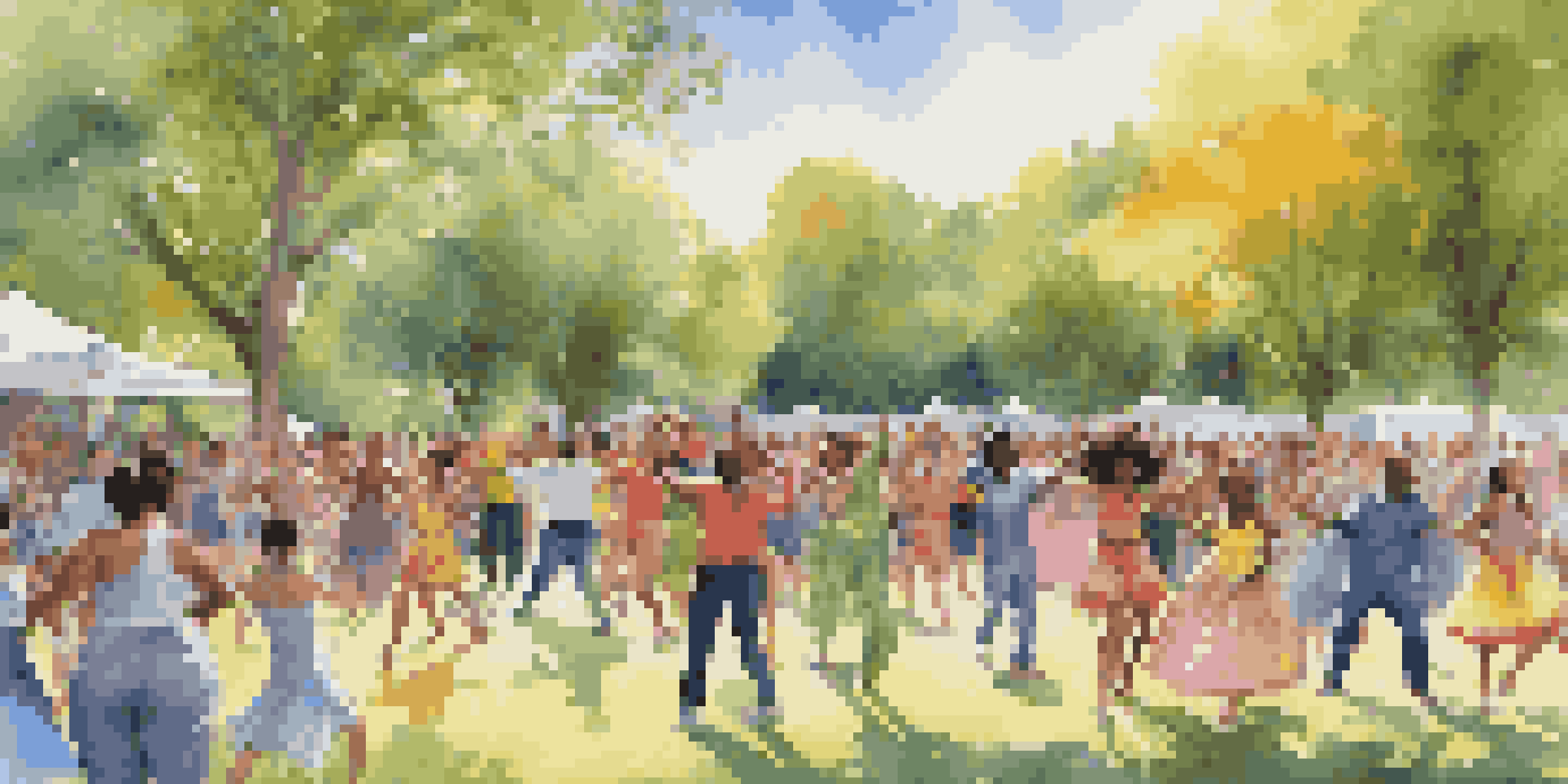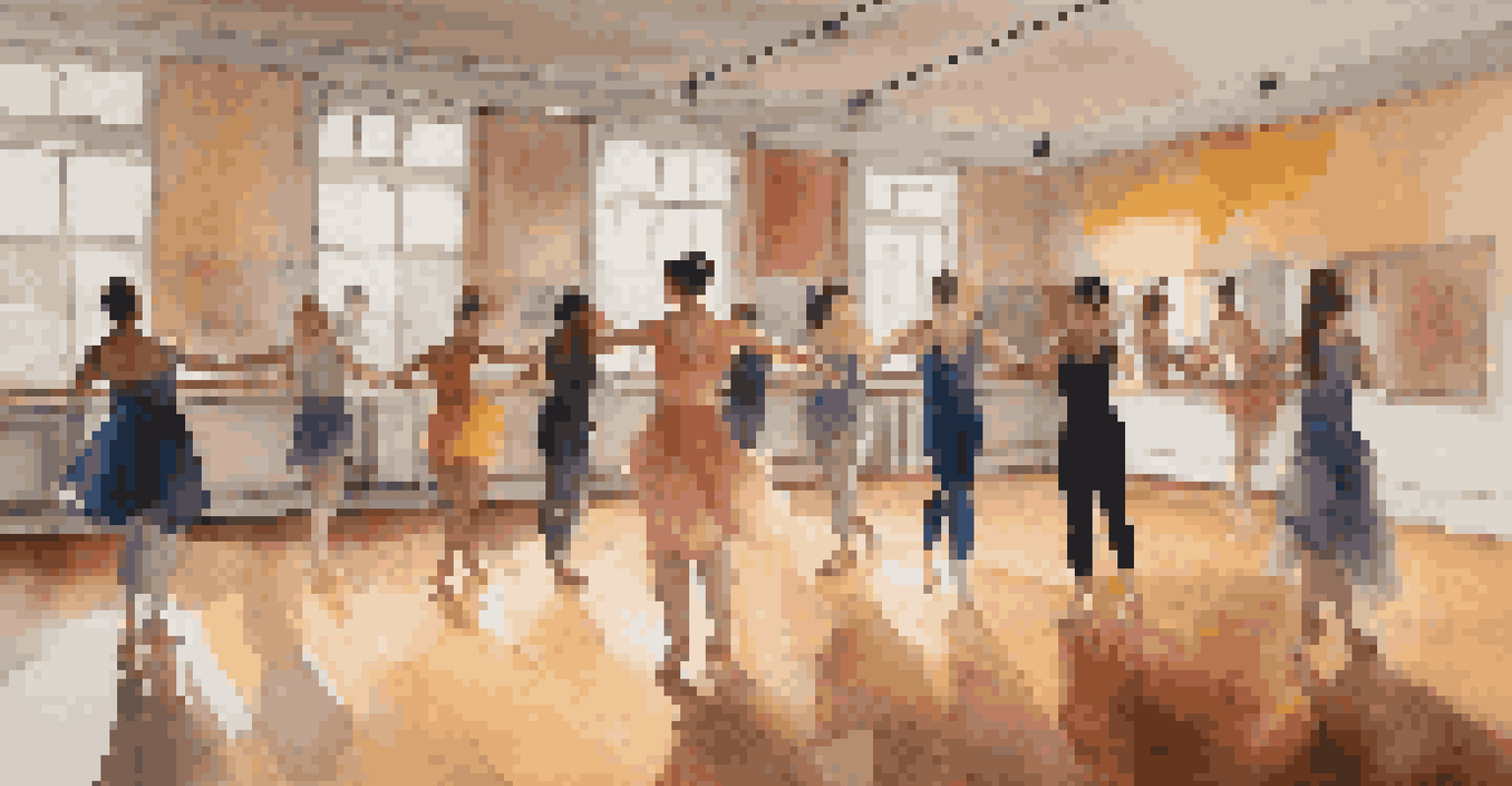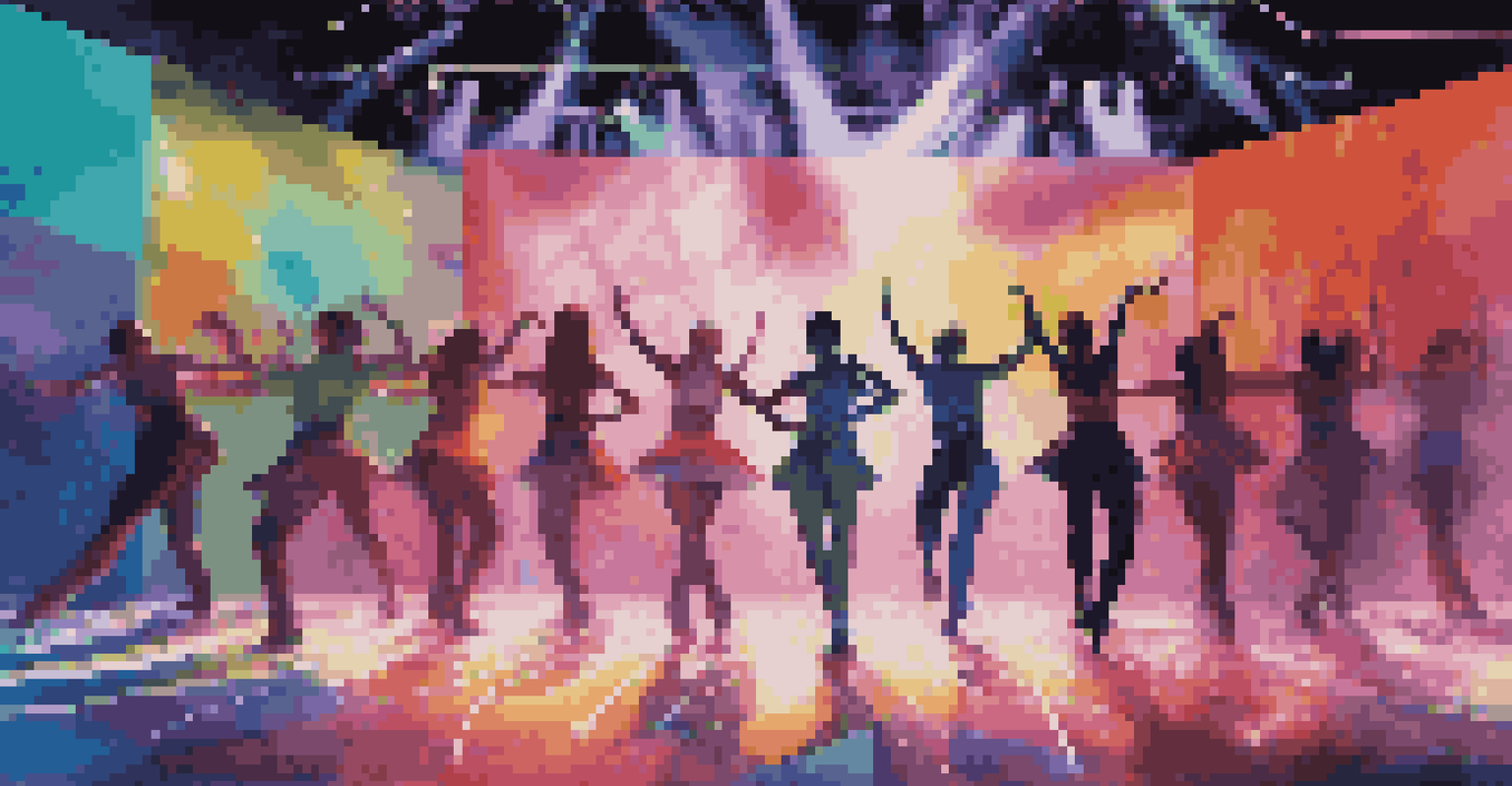Collaborative Dance Events: Bringing Artists Together Live

Understanding Collaborative Dance Events and Their Purpose
Collaborative dance events are gatherings where artists unite to create and perform together. These events emphasize teamwork, allowing dancers to blend their unique styles and perspectives. By coming together, they can break down traditional barriers within the dance community, fostering a sense of belonging and creativity.
Dance is the hidden language of the soul.
These events often showcase a variety of dance forms, from contemporary to hip-hop, highlighting the diversity within the art. They serve as a platform for emerging artists to showcase their talents alongside seasoned professionals. This mixing of experience levels not only enriches the performance but also provides valuable learning opportunities for all involved.
Ultimately, the purpose of collaborative dance events is to celebrate the art of dance itself while building a supportive community. By encouraging interaction and collaboration, these events create a vibrant atmosphere that inspires creativity and innovation among participants.
The Benefits of Collaboration in Dance
Collaboration in dance opens up a world of possibilities for artists. When dancers come together, they can share ideas, techniques, and interpretations, which can lead to unexpected and exciting performances. This synergy often results in a richer artistic experience, as the fusion of different styles and backgrounds creates something entirely new.

Moreover, working with others helps dancers develop essential skills such as communication and adaptability. These skills not only enhance their performances but also prepare them for future artistic endeavors. When dancers learn to collaborate, they become more versatile artists, capable of thriving in various environments.
Collaboration Enhances Dance Artistry
Collaborative dance events allow artists to share ideas and techniques, resulting in innovative performances that blend diverse styles.
Additionally, collaboration fosters a sense of camaraderie among dancers. The friendships formed through shared experiences can lead to ongoing partnerships in the future. This sense of community is vital in an industry that can sometimes feel isolating, providing support and encouragement when it’s needed most.
How Collaborative Dance Events Are Organized
Organizing a collaborative dance event involves careful planning and coordination among various artists. Typically, a central organizer or group will reach out to dancers, choreographers, and other creative professionals to gauge interest. Once a team is assembled, brainstorming sessions help shape the event's theme and structure, ensuring everyone has a voice in the planning process.
Collaboration allows us to know more than we are capable of knowing by ourselves.
Logistics play a crucial role in the success of these events. From securing a venue to coordinating rehearsal schedules, each step requires attention to detail. Organizers must also consider marketing strategies to attract audiences, which might include social media promotions and community outreach efforts.
Lastly, fostering a positive environment during the event is essential. Participants should feel valued and encouraged to express themselves freely. This supportive atmosphere can significantly enhance the overall experience, resulting in performances that resonate with both the artists and their audience.
Examples of Successful Collaborative Dance Events
Several renowned dance festivals highlight the power of collaboration. For instance, the 'Dance Across Borders' festival brings together dancers from various cultural backgrounds to create fusion performances. This event not only showcases diverse dance styles but also emphasizes the importance of cultural exchange in the arts.
Another example is the 'Collective Movement' initiative, where local dance companies collaborate to produce a series of performances. This project allows artists to experiment with new ideas and engage with different communities, further promoting inclusivity in the dance world. Each performance tells a unique story, reflecting the various influences that shaped it.
Technology Expands Dance Accessibility
The integration of technology in dance events, such as live-streaming and virtual rehearsals, broadens audience reach and facilitates collaboration.
These examples illustrate that successful collaborative dance events don’t just entertain; they also educate and inspire. By highlighting the beauty of diversity and creativity, these events serve as a reminder of the unifying power of dance.
The Role of Technology in Collaborative Dance Events
In today's digital age, technology plays a significant role in enhancing collaborative dance events. From live-streaming performances to using social media for promotion, technology expands the reach of these events beyond local communities. This accessibility allows more people to experience the magic of collaborative dance, regardless of their geographic location.
Moreover, technology facilitates communication and collaboration among dancers, especially in a world where remote work is becoming more common. Virtual rehearsals and online brainstorming sessions enable artists to connect and create without being physically present in the same space. This flexibility can lead to innovative ideas that might not have emerged in a traditional setting.
However, it’s essential to strike a balance between technology and the art form itself. While tech can enhance performances, the heart of dance remains in the human connection and emotion expressed on stage. By integrating technology thoughtfully, artists can elevate their work while staying true to the essence of dance.
Audience Engagement in Collaborative Dance Events
Audience engagement is a crucial aspect of collaborative dance events. By involving the audience, whether through interactive performances or discussions, organizers can create a more immersive experience. This connection not only enhances the enjoyment of the event but also fosters a deeper appreciation for the art of dance.
One effective way to engage the audience is through post-performance Q&A sessions. These discussions allow attendees to ask questions, share their thoughts, and learn more about the creative process behind the dances. This interaction demystifies the art form and encourages a dialogue between performers and their audience.
Engaging Audiences Enriches Experience
Involving audiences through interactive elements and discussions fosters a deeper appreciation for dance and creates a sense of community.
Additionally, incorporating audience participation in performances can lead to memorable experiences. When spectators feel like they are part of the action, it creates a sense of community and shared joy. Ultimately, engaging the audience enhances the overall atmosphere of the event, making it a celebration of creativity and collaboration.
Future Trends in Collaborative Dance Events
As the world of dance continues to evolve, so do collaborative dance events. One emerging trend is the integration of cross-disciplinary approaches, where dancers collaborate with artists from other fields, such as visual arts or music. This fusion creates multi-sensory experiences that captivate audiences and broaden the scope of dance as an art form.
Sustainability is also becoming an increasingly important focus in the organization of dance events. Many artists and organizers are looking for eco-friendly ways to produce performances, from using sustainable materials for sets to reducing waste during events. This shift not only reflects a growing awareness of environmental issues but also attracts audiences who value sustainability.

Lastly, the rise of virtual reality (VR) and augmented reality (AR) technology may reshape how collaborative dance events are experienced. Imagine attending a performance where you can interact with the dancers in a virtual space or view the choreography from different angles. These advancements could revolutionize audience engagement, providing new ways to connect with the art of dance.